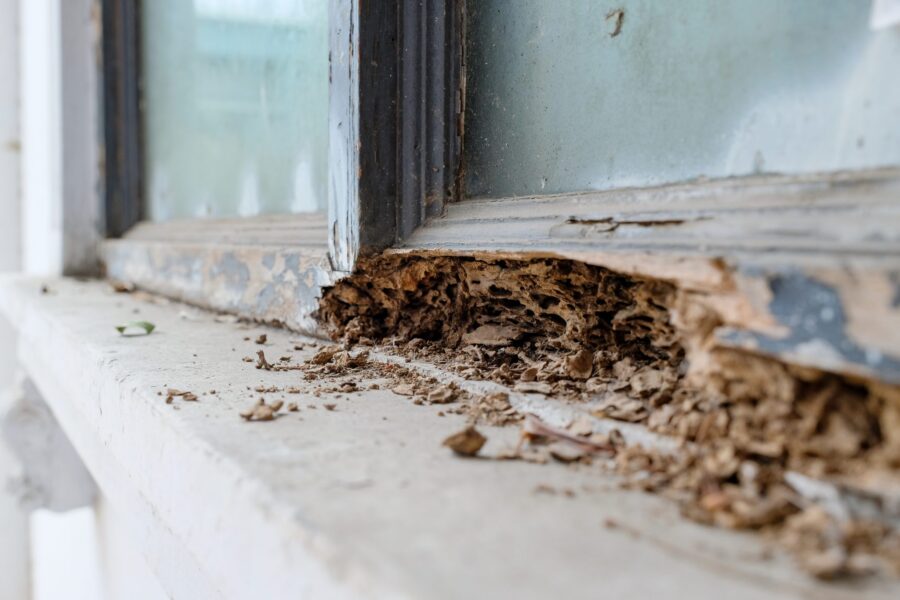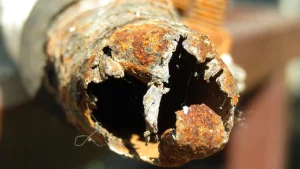
Not all pest problems are immediately visible. In fact, many infestations remain hidden behind walls, under floors, or in attics for weeks or even months before homeowners realize there’s an issue. By the time you see pests out in the open, the problem may already be well-established.
So how can you tell if you’ve got a hidden infestation? Here are the top 5 signs to watch for—and why acting quickly can save your home, your health, and your peace of mind.
1. Unexplained Droppings or Smears
Pest waste is one of the first and most common signs of a hidden infestation. Even if you never see the pests themselves, their droppings often appear in:
- Kitchen cabinets and drawers
- Under sinks
- Along baseboards
- Behind appliances
- Inside pantries
What to look for:
- Rodents leave small, dark pellet-shaped droppings.
- Cockroaches leave tiny black specks or smear marks, especially near water sources.
- Bed bugs leave rust-colored spots on sheets or mattress seams.
If you notice droppings, don’t just clean them up—try to track the pattern. Repeated findings in the same area may point to nesting zones or entry points.
2. Strange Noises at Night
If your house sounds different after dark, pests may be the reason. Many critters are nocturnal, meaning they’re most active when you’re asleep.
Common noises include:
- Scratching or scurrying in the walls, attic, or ceiling (common with mice, rats, or squirrels)
- Buzzing or tapping (may indicate carpenter bees, wasps, or larger insects)
- Thumping or rustling under floors or in crawlspaces
Rodents, especially, tend to nest in hidden areas and create a lot of noise as they move through insulation or gnaw on wood and wires.
Pro tip: If the sounds get louder at night or after you’ve gone to bed, there’s a good chance pests are using your quiet time to explore.
3. Odd or Musty Odors
A persistent, unexplained smell in your home can signal a hidden pest issue. Infestations often come with odors caused by:
- Pest urine or droppings
- Decaying food from nests
- Dead pests in walls or vents
- Mold caused by nesting or burrowing
What you might smell:
- A musky odor can point to rodents or roaches.
- A sweet, oily smell may be linked to certain ant infestations.
- A strong, ammonia-like scent may indicate a large rodent nest or waste buildup.
If you’ve cleaned everything and the smell persists, it’s worth investigating behind the scenes—or calling a professional to do so.
4. Damaged Wires, Wood, or Food Packaging
Pests leave behind physical signs of their activity—if you know what to look for.
Rodents will:
- Chew through electrical wiring (a serious fire hazard)
- Gnaw on wooden beams or furniture
- Shred paper or fabric for nesting material
- Leave bite marks on food bags or boxes
Termites or carpenter ants may:
- Hollow out wood from the inside, leaving a soft or papery surface
- Cause sagging floors, bubbling paint, or tiny holes in drywall
If you notice gnaw marks, food bags with holes, or unexpected damage to walls or baseboards, don’t ignore it—pests could be settling in.
5. Seeing Just One or Two Pests
It might sound odd, but seeing a single cockroach or mouse can be one of the strongest indicators of a much larger problem.
Most pests are naturally shy and avoid human contact. If they’re brazen enough to show themselves in the open—especially during the day—it often means:
- The nest is overcrowded.
- They’re searching for new food or water sources.
- The infestation is large enough that hiding is no longer sustainable.
Don’t assume a single sighting is a fluke. It’s often the tip of the iceberg.
Why Early Detection Matters
A hidden infestation can:
- Cause expensive structural damage
- Create health risks from contaminated surfaces or air
- Lead to larger pest populations over time
- Require more intensive treatment later on
The earlier you identify the signs and take action, the easier (and cheaper) the pest control process will be.
What to Do if You Suspect a Hidden Infestation
If any of the signs above sound familiar, don’t wait. Here’s what you can do:
- Document what you see or hear – Take photos, note patterns, and collect any droppings or damage samples (safely).
- Avoid using over-the-counter sprays or traps until the pest is properly identified—they could make the problem worse.
- Call a licensed pest control professional for an inspection. They’ll know what to look for and how to safely access hidden nesting areas.
Final Thoughts
Pests may be great at hiding—but they always leave clues. If you know what to watch for, you can catch infestations before they cause serious damage.
Unusual smells, noises, droppings, or even a single sighting could be warning signs that pests have made themselves at home. Don’t ignore them—addressing the issue early could save you time, money, and stress down the road.
Need help identifying suspicious signs in your home? Contact us today for a professional inspection and peace of mind. We recommend kansas city pest control.







